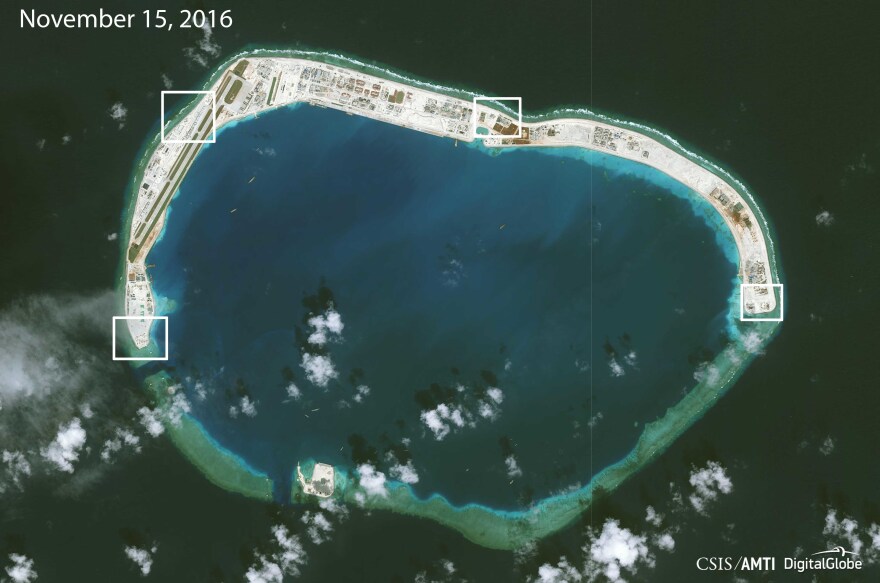China "appears to have built significant point-defense capabilities" on artificial islands in the South China Sea, says a think tank that cites new satellite imagery showing hexagonal gun platforms and other recent construction.
In vivid color, the photos show what the Asia Maritime Transparency Initiative says is an array of anti-aircraft guns, cruise missile defenses, in nearly identical emplacements on islands created on large reefs to serve as outposts in the Spratly Islands.
In recent years, tensions around the islands have been an undercurrent in America's relationship with China, featuring in talks between President Obama and President Xi Jinping and raising the specter of escalating shows of military might in the area.
Discussing the satellite photos that were taken in recent weeks, Asia Maritime Transparency Initiative Director Gregory Poling told Voice of America, "This is further evidence that the commitment that President Xi Jinping made to President [Barack] Obama last year not to militarize these islands was, at best, premature."
The new military emplacements are being highlighted months after an international tribunal in The Hague invalidated China's claims in the South China Sea. That unprecedented ruling also found that China's build-up of artificial islands in the region was also harming natural ecosystems.
China's leaders rejected that decision, which came in a case that was brought by the Philippines. In addition to those two countries, parts of the South China Sea are also claimed by Taiwan, Malaysia, the Vietnam and others.
The disputed areas include busy shipping lanes in the sea, along with a wealth of natural resources, from fishing grounds to underground oil and gas reserves.
"But the dispute is not just about economic assets," as our Parallels blog reported earlier this year. "The sea's strategic location near half a dozen East and Southeast Asian countries means those countries want to control the military and civilian activities in the area."
Providing analysis of China's military goals in the islands, the AMTI says:
As the Parallels blog noted, "The potential for deteriorating cross-strait relations puts the United States in a tough spot — it must uphold its security commitments to Taiwan while avoiding confrontation with Chinese vessels patrolling Taiwanese islands."
Copyright 2023 NPR. To see more, visit https://www.npr.org.


